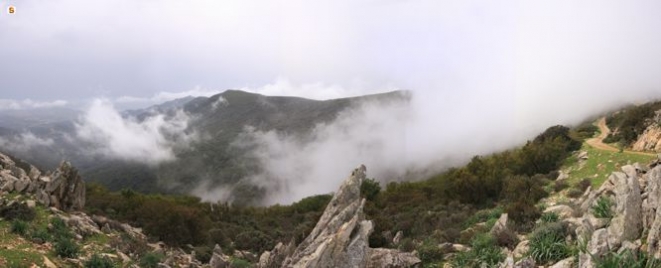The tourism of excellence of Castiadas
A haven of peace in between beaches and forests
We are in Sarrabus, a sub-region situated in the extreme south east of Sardinia, in the province of Cagliari. Characterized by a predominantly agricultural and pastoral economy, today Sarrabus is also synonymous of tourism excellence for its crystal-clear waters and white fine beaches that run for dozens of kilometers from Villasimius to the mouth of the river Flumendosa.
But are the inland areas of the territory that give interesting surprises. Starting with Minni Minni towards the mountains of the Sette Fratelli (Seven Brothers), regional park, to the mountain forests of Villaputzu, it is an only unspoiled environmental heritage, where plants, ancient trees and rare species of fauna are still huts of yesteryear.
It is in Sarrabus where the long granite ridge that crosses Sardinia, from Gallura to the south, emerges between Capo Ferrato and Capo Carbonara.

It is also in Sarrabus that the Flumendosa, the second longest river of the island, makes the last part of its course, flowing into the sea above the Colostrai pond just north of Muravera.
The area of Sarrabus, with its deposits, is part of the important Geo-mining Park of Sardinia. The whole area offers a comprehensive range of services to those who want to combine the beauty of the culture, traditions, practices and customs; from June to September is a succession of festivals linked to agricultural production, farming, fishing and crafts.
Muravera, built in medieval times, is the largest town. Renowned for the production of citrus fruits (in April a beautiful festival is held) it is now a popular seaside resort. The ponds are really beautiful. Have to be visited also the parish church of San Nicola of Bari, dating Catalan Gothic (XV - XVI century) and the megalithic complexes of Piscina Rei and Cuili Piras, a series of monoliths come back to 5000 years BC, according to recent surveys , they served as a stone calendar to the identification of seasonal cycles.
Nestled between the mountains is the village of San Vito, founded in the late fifteenth century, characterized by an economy devoted to agriculture and crafts, Muravera shares with a territory studded with silver mines, like that of Mount Arba, a time rich now resigned.
Villaputzu, important agricultural center built in the hills and the alluvial plain of Flumendosa, presents itself to tourists with its ancient fishing port, Porto Corallo, now turned into a landing boat destined for a secure future development.

Villasimius, founded in early 1800, is located in South-Eastern area nestled in a lovely setting. Tourist center of international reputation, since 1998 boasts the Protected Marine Area of Capo Carbonara. The abundance of fish in the sea around the islands of Cavoli and Serpentara attracts the most experienced and the most demanding divers. Well patronized the small but well-equipped marina. The archaeological museum has to be visited, with finds from excavations in the archaeological and marine finds, retrieved at medium depth.
Castiadas, recently became an independent municipality, it is one of the most picturesque urban centers of the Sarrabus. Coveted tourist destination, retains its charm with enchanting woods, green landscapes and white sandy beaches. Its district lies in the Seven Brothers park, made up of vast tracts of forests. Here are some intact plant species extinct elsewhere and tall trees like oaks, cork trees, juniper trees and native species like myrtle, rosemary, cistus, strawberry trees and abundant wildlife represented by deers and wild boars, eagles, buzzards, imperial crows, wild cats, martens, foxes, woodpigeons, woodpeckers.
Around the middle of the nineteenth century, the Ministry of Interior installed in the center of Villanova Castiadas, uninhabited for three centuries, due to frequent epidemics, the largest agricultural penal colony of Italy, where the detainees, in addition to serving his sentence, were required to clean up the unhealthy area. Today the visit of the colony has become a must: in the summer, some parts are used for craft shows and agribusiness. After the reclamation and agricultural transformation after the Second World War, the area took on the characteristic appearance of the ordered "new landscapes", with delightful villages, the dense network of farms and windbreak bands.
Castiadas is also known for the products of the earth: wine, oil, bread and cakes. The finest wine produced from local winery is the Cannonau Capo Ferrato, a red wine Doc.
The cooperative Monte dei Sette Fratelli manages a service center for hiking tourism: guided tours in the Acqua Callenti forest for trekking, land rover hiking in south eastern Sardinia; flight enthusiasts have access to a long runway on which they operate throughout the year Italian and foreign private aircraft; in summer it is possible to practice parachuting, too.